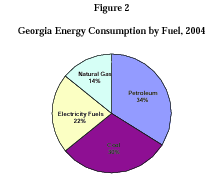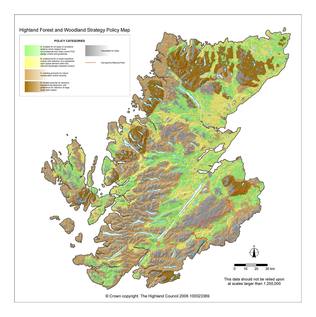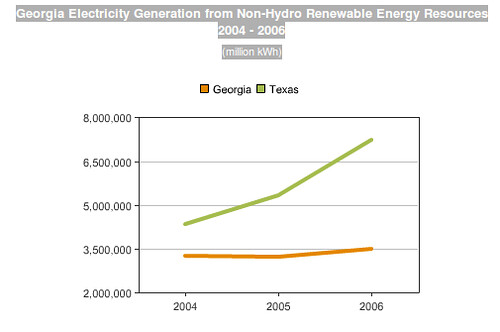 He did find
this list of “renewable energy strategy”
hits from a GEFA search.
At least one of those links points us to http://www.georgiaenergyplan.org/,
which now gets us
He did find
this list of “renewable energy strategy”
hits from a GEFA search.
At least one of those links points us to http://www.georgiaenergyplan.org/,
which now gets us
Are you interested in buying this domain name?The state has apparently abandoned that domain. Is that an indication of how seriously Georgia takes renewable energy?
Here’s something that looks promising: State Energy Strategy for Georgia (SESG), December 14, 2006, Governor’s Energy Policy Council, GEFA. It says it’s an energy strategy, but it’s mostly about transportation of existing fuels such as natural gas. Towards the end of the document in Figure 2 (shown above) the SESG illustrates the pit we’re in: about a third of Georgia’s energy comes from coal, another third from petroleum, a sixth from natural gas, and so little from renewable sources they apparently weren’t worth putting on the pie chart.
The SESG does contain this:
Policy Objectiveand this:
Maximize Development of In-State, Cost-Competitive Bio-Based Transportation Fuels and Expansion of the Retail Infrastructure
Policy ObjectiveThose are good goals.
Maximize Vehicle Fuel Efficiency in Georgia to Enhance Transportation Fuel
But it also includes this:
Policy ObjectiveIn which it considers building crude oil refineries in Georgia. Or in-state storage facilities. You know, when you’re already in a pit, stop digging! If we’re going to invest, let’s invest in renewable energy, not more of the same oil addiction.
Enhance Petroleum Infrastructure to Minimize Vulnerability to Supply Disruptions
There is some discussion in the SESG of distributed electricity generation (DG) and combined heat and power generation. There is even a very brief mention of:
This is good. I’ve taken advantage of this by connecting my solar panels to the grid: the first-ever such connection through Colquitt Electric EMC. And that’s the problem: the first and only. A good idea left dormant, with no promotion by the major electric utilities or by municipalities or the state or anyone else.Five years ago, the Georgia General Assembly sought to promote DG by approving the “Georgia Cogeneration and Distributed Generation Act of 2001” (O.C.G.A. 46-3-50 et seq.). This law permits a reesidential or commercial consumer that operates a small electricity generation system on its side of the meter &emdash; such as a residential solar system &emdash; to sell electricity back to the utility when the power is not needed on-site.
Policy ObjectiveSo the state of Georgia is willing to consider massive investments in crude oil refineries, yet immediately pooh-poohs clean electricity generation? We won’t dig out of the pit we’re in that way.Encourage Investment in Clean, Viable Next Generation Electricity Technology
Several viable emerging energy technologies are promising higher levels of generation efficiency, power reliability and improved environmental performance. As is often the case, these technologies cost more money and/or require adjustments in infrastructure or the market that are slow to occur. Throughout U.S. history, the federal and state governments have implemented policy to stimulate the commercialization or deployment of the next generation of critical technologies.
Meanwhile, Texas has encouraged solar, and between 2004 and 2006 almost doubled production, with continued rampup since then. Why does Georgia not do the same?
 Where’s the rest of a Georgia Renewable Energy strategy?
Solar, wind, waves, tides, etc.?
Where’s the rest of a Georgia Renewable Energy strategy?
Solar, wind, waves, tides, etc.?
This is what a real renewable energy strategy looks like: Highland Renewable Energy Strategy.
Where is the equivalent for Georgia?
-jsq
Short Link:
